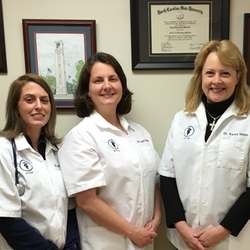MICROCHIPPING
OF ANIMALS
A
microchip is a form of permanent identification. It is not a GPS tracking
device. It is a tiny electronic chip enclosed in a glass cylinder that is about
the size of a grain of rice. The chip is injected under the skin between the
shoulder blades of a dog or cat. The chip is activated by the radio waves of a
scanner that is passed over the area. The chip will then transmit the
identification number to the scanner which displays the number on its screen.
The
microchip is injected under the skin using a hypodermic needle that is larger
than the needles used for vaccinations but it can be given quickly with only a
momentary (if any) ouch. The chip can be implanted during a regular office
visit or while a pet is under anesthesia for a procedure such as a spay,
neuter, or a dental cleaning.
A
microchip can help reunite a lost pet with its owner. If a pet is found and
taken to an animal hospital or a shelter, one of the first things done is
scanning to check for a microchip. If a chip is found, the number is looked up
to see if it is in the database at that facility. If it isn’t, then a national
registry can be contacted and the number will be looked up. If the registry has
accurate and current information on the owner, the owner can be contacted. A
recent study showed that in shelters, dogs without microchips were returned to
their owners 21.9% of the time while dogs with chips were reunited with their
owners 52.2% of the time. The statistics for cats were 1.8% vs 38.5%.
There
is not a central database in the U.S.
Your
veterinarian can gladly implant your pet’s microchip. Make sure that you notify
the microchip registry of any change in your owner information (especially
phone numbers and address). Also, remind your vet to scan for your pet’s
microchip at its yearly visit to make sure it is reading properly.
Microchipping
is a smart way to greatly increase the likelihood that you will be reunited
with your lost pet. Do it because you love them as part of your family.
Karen
Miller, DVM
Veterinarian
and owner of Lincolnton Animal Hospital





